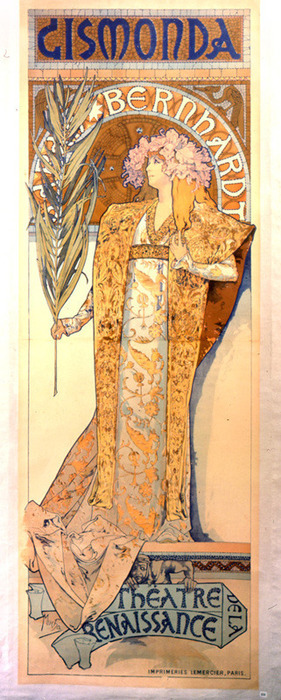via wired.com
With Comic-Con came more information and more visuals from the highly anticipated Disney movie Tron: Legacy. It’s the sequel to the 1982 movie Tron, an anthropomorphic view of what life would be like inside a computer if softwear were people-like and not just electronic bits.
The original movie had a message, but perhaps best known for its exciting (in 1982) sci-fi visual effects and images. The sequel had to live up to having an up-to-date, 2010 version of the best in distinctive electronic imagery, and so far it looks like it may have succeeded.
The 1982 film had a story that was concerned with warning about computers knowing too much about us and controlling our lives. Now we accept that as just the way it is, so the new movie had too look for modern concerns for its storyline. About the new message, the writer/director said, “Technology is all about bringing people together, supposedly, and now there’s this sense that technology may have a dark side that keeps us from connecting with each other, and I think this film examines that problem.”
The first movie used scenes of video game action within the computer as a showcase for the imagery. In the new movie, combatants once again fight it out in the virtual world, hurling discs and riding light cycles. They also still wear suits that have the movie’s trademark glow, expect in the modern version. costumes shine more brightly, due to electroluminescent lamps woven into the casts’ tight-fitting suits. Before “action!” was said on set for each scene, there would be a call to “light ‘em up!” To make the new movie even more visually stunning, it was filmed in 3-D rather than having it added post-production.
Actor Jeff Bridges stars in Tron: Legacy, reprising the role of videogame designer Kevin Flynn. Between the time of the first and second films, it is revealed that the character has been lost in the network for many years. His son, played by Garrett Hedlund, enters cyberspace to look for him. There are again life-and-death battles between the inner world characters, played out in the dark, foreboding, but shiny environment that most of the movie takes place in.
The original movie grossed only $33 million in the United States in 1982. Expect the sequel to do much better.
Wednesday, July 28, 2010
Tuesday, July 27, 2010
Raspberry Brie Panini
 I love panini. There’s something wonderful in how a plain meat and cheese sandwich can be transformed into a deliciously satisfying experience. I don’t how it happens, but the pressing of the bread, the oozing of the melted cheese, and the mixture of other stuffings all combine to make a special treat that makes my mouth and tummy quite satisfied.
I love panini. There’s something wonderful in how a plain meat and cheese sandwich can be transformed into a deliciously satisfying experience. I don’t how it happens, but the pressing of the bread, the oozing of the melted cheese, and the mixture of other stuffings all combine to make a special treat that makes my mouth and tummy quite satisfied.I see this recipe for a raspberry and brie panini and I don’t know if I would find it as satisfying as a meat based sandwich, but it sure is pretty to look at. I want to try one.
I don’t cook, although I do have an unopened panini grill that I received as a present last Christmas. Actually, I had forgotten about it until I started writing this note.
Now I’ve gotten myself so worked up thinking about my love of panini, I want to unbox it tomorrow and give the little appliance a try. It won’t be raspberry and brie, but I may be able to able to cobble together some fat-free swiss cheese, fat-free hot dogs, and the ends of the loaf of bread that I haven’t thrown out yet.
The ingredients don’t matter. The panini process makes anything remarkable. (Or at least, we’ll see.)
The Italian word panino refers to a small bread roll. It is the diminutive form of pane (“bread”). The plural is panini, which when you have it, linguistically justifies eating more than one.
photo and recipe via rockrecipes.blogspot.com
Saturday, July 24, 2010
Flexibility
via godsnmonsters.tumblr.com

With that kind of limberness and that package, why is he bending backwards?

With that kind of limberness and that package, why is he bending backwards?
History of Alphonse Maria Mucha

July 24th, 2010, is the 150th anniversary of the birth of the renown Czech artist Alphonse Maria Mucha. Mucha is known for his works in several mediums in the Art Nouveau style, which he helped to popularize around the end of the 19th century.
The work that first brought him fame was a poster of the actress Sarah Bernhardt for the play Gismonda (seen here). Its creation story is that on Christmas Eve, 1894, Mucha was doing a favor for a friend, a printer, correcting proofs. On that day Bernhardt contacted the printer with a request for a new poster for her play, which she needed as soon as possible. All the printer’s artists were on holiday, so Mucha volunteered to create the poster. Bernhardt was the queen of celebrities in her day and her wishes were quickly addressed.
The resulting poster, which Mucha created in two weeks, was an instant success and revolutionized poster design. The long narrow shape, the subtle pastel colors and the stillness of the near lifesize figure introduced a look that was quite novel for the time. The poster was so popular with the Parisian public that collectors were known to bribe the laborers who hung them to hand them over, or simply to go use razors to cut them down from the walls. Bernhardt was so satisfied with the poster she gave Mucha a muli-year contract to produce stage and costume designs as well as posters for her.
After that, his posters, panneaux decoratifs, calendars, prints, magazine and book illustrations attained enormous popularity. With his exquisite decorative motifs, abundance of ornamental pictorial elements, and beautifully graceful lines, his compositions shaped the the Art Nouveau style.
The “le style Mucha” became the pattern for a whole generation of graphic artists and draftsmen.
His hallmark was the idealized, stylized figure of a graceful woman, loosely but inseparably framed in an ornamental system of flowers and foliage, symbols and arabesques. As this was one of the most widespread pictorial motifs of the turn of the century, the Mucha Style became for a while to be regarded as synonymous with the whole Art Nouveau movement.
Mucha actually disliked the name “Art Nouveau”, or the idea that it was a movement, arguing that art was eternal and therefore could not be “noveau.” He insisted he derived his main inspiration from Czech artistic traditions, rather than subscribing to the doctrines of any particular school.
A hundred years later, Art Nouveau is still a wonderful visual stimulation.
Labels:
art,
Art Nouveau,
Czech,
Mucha